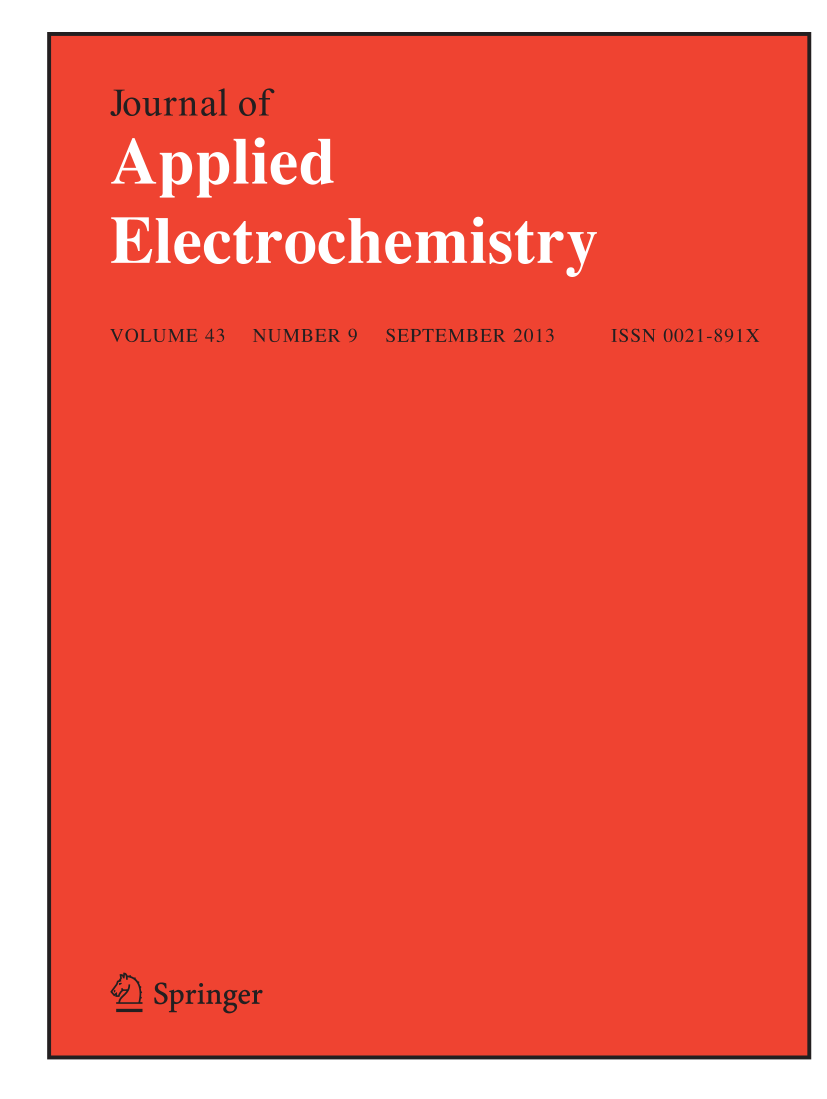基于ZrO2/离子液体的电化学传感器超灵敏同时测定生物体液中甲氧氯普胺和扑热息痛
IF 2.4
4区 工程技术
Q3 ELECTROCHEMISTRY
引用次数: 0
摘要
摘要制备了一种新型电极——二氧化锆纳米颗粒与离子液体(zro2np /IL/CPE)纳米复合材料修饰的碳糊电极,并将其用于散装粉末、药物制剂和生物流体中扑热息痛(PAR)和甲氧氯普胺(MCP)混合物的测定。此外,这是首次报道同时测定对乙酰氨基酚有毒杂质(即对氨基酚和对氯乙酰苯胺)的方法。利用方波(SWV)和循环伏安(CV)技术考察扫描速率、浓度和pH对传感器响应的影响,以优化传感器的响应。两种药物在(0.1 ~ 200 nM) ~(3.0 ~ 100.0µM)低、宽浓度范围内均可获得校准曲线,PAR和MCP的检出限分别为28和29 pM,定量限分别为93和97 pM。该传感器用于评估人体血浆、尿液样本和药物配方中的PAR、MCP和扑热息痛有毒杂质,结果令人满意,显示出从100 pM到100µM的宽动态线性范围,灵敏度高,重现性好。图形抽象本文章由计算机程序翻译,如有差异,请以英文原文为准。
Electrochemical sensor based on ZrO2/ionic liquid for ultrasensitive simultaneous determination of metoclopramide and paracetamol in biological fluids
Abstract A novel electrode, carbon paste electrode modified with a nanocomposite of zirconium dioxide nanoparticles and ionic liquid (ZrO 2 NP/IL/CPE), has been fabricated and used to determine both the paracetamol (PAR) and metoclopramide (MCP) mixture in bulk powder, pharmaceutical formulations, and biological fluids. Furthermore, it is the first reported method to determine the paracetamol in presence of its toxic impurities (i.e., p-aminophenol and p-chloroacetanilide) simultaneously. Square wave (SWV) and cyclic voltammetric (CV) techniques were used to investigate the effect of scan rate, concentration, and pH in order to optimize sensor’s response. The calibration curves were obtained in both low and wide concentration ranges from (0.1–200 nM) to (3.0–100.0 µM) for both drugs with limit of detection (LOD) as low as 28 and 29 pM and limit of quantification (LOQ) 93 and 97 pM for PAR and MCP, respectively. The proposed sensor was used to assess PAR, MCP, and paracetamol toxic impurities in human plasma, urine samples, and pharmaceutical formulations with satisfactory results showing a broad dynamic linear range from 100 pM to 100 µM with high sensitivity and good reproducibility. Graphical Abstract
求助全文
通过发布文献求助,成功后即可免费获取论文全文。
去求助
来源期刊

Journal of Applied Electrochemistry
工程技术-电化学
CiteScore
4.70
自引率
3.40%
发文量
133
审稿时长
2.9 months
期刊介绍:
The Journal of Applied Electrochemistry is the leading journal on technologically orientated aspects of electrochemistry. The interface between electrochemical science and engineering is highlighted, emphasizing the application of electrochemistry to technological development and practice, and documenting properties and data of materials; design factors, design methodologies, scale-up, economics and testing of electrochemical devices and processes. The broad range of technologies includes energy conversion, conservation, and storage, new battery systems, fuel cells, super capacitors, solar cells, power delivery, industrial synthesis, environmental remediation, cell design, corrosion, electrochemical reaction engineering, medical applications of electrochemistry and bio-electrochemistry, the electrochemical treatment of effluents, hydrometallurgy, molten salt and solid state electrochemistry, surface finishing, electroplating, electrodeposition, sensors, and applications of molecular electrochemistry. It also publishes invited reviewed articles, book reviews and news items and a comprehensive electrochemical events calendar.
 求助内容:
求助内容: 应助结果提醒方式:
应助结果提醒方式:


